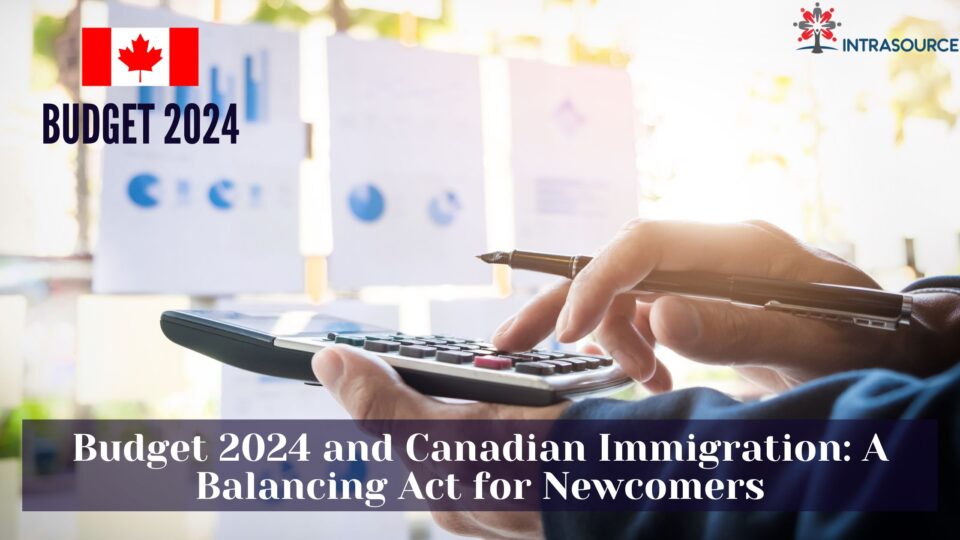As Canada’s Minister of Finance, Chrystia Freeland, presented the federal Budget 2024 to Parliament, the nation tuned in with a keen interest to decipher how this financial plan shapes the future landscape for immigration. While the Budget did not heavily feature direct spending on immigration, we cannot overlook its implications for newcomers due to its strong stance on housing affordability and economic productivity.
Unpacking the Federal Budget: What Newcomers Need to Know
Each year, Canada’s budget lays the groundwork for fiscal decisions that impact all residents, including immigrants. The newly tabled Budget gives insight into federal expenditures and sets expectations for the economic climate in the forthcoming year. For those seeking to navigate Canadian immigration policy, grasping the nuances of government spending is crucial.
The current budget promises $53 billion in new funding with cornerstone investments focused on making housing more affordable, boosting defense, and enhancing the national workforce’s efficiency—all of which can indirectly influence immigration experiences and opportunities.
Housing Affordability Measures
In anticipation of the budget announcement, Minister Freeland and Prime Minister Justin Trudeau brought attention to federal strategies aimed at addressing Canada’s housing crisis. The plight of housing affordability undeniably affects millennial and Generation Z—demographics that also represent a significant portion of prospective newcomers.
Highlighting initiatives such as a Renters Bill of Rights and enhanced investment in the Apartment Construction Loan Program (escalated to $55 billion), demonstrates a commitment to construct more rental units catering to varied groups including students and elderly care facilities. Notably, this augmented funding could benefit immigrants looking for their first home in Canada.
Effective April 16, first-time buyers will find themselves with an expanded ability to withdraw up to $60,000 from their RRSPs for home purchases—a substantial increase from the previous cap of $35,000. Additionally, newcomers will receive five years before they are required to start repayments on these withdrawals.
Immigration Aligning with Housing Availability
A forward-thinking aspect of Budget 2024 is its recognition of housing shortages in alignment with Immigration Refugees and Citizenship Canada (IRCC) policies. The soon-to-be-released Immigration Levels Plan 2025-2027 not only incorporates targets for permanent residents but also sets targets for temporary inhabitants such as workers and international students.
By anticipating a reduction of up to 600,000 temporary residents over three years, the Government anticipates relieving pressure on tight housing resources—with positive outcomes hoped for both existing residents and those wishing to call Canada home.
By highlighting these vital points—considerations for affordable housing avenues for new immigrants and shifts in temporary resident numbers—the article aims at capturing a holistic view of Budget 2024’s impact on Canadian immigration while engaging SEO tactics like targeted keywords (“Budget 2024”, “Canadian immigration”, “housing affordability crisis”, “IRCC”, “Immigration Levels Plan”) that optimize search engine visibility.
Investment in Foreign Credential Recognition
In a forward-thinking move, the government’s latest commitment doubles down on integrating skilled international professionals into Canada’s workforce. As part of its economic blueprint, the government has earmarked $50 million for the Foreign Credential Recognition Program. This initiative is not new—it follows a substantial investment of $115 million highlighted in the previous Budget.
Focused Funding for Residential Construction
One major slice of this funding pie—$25 million—will empower skilled trades workers within residential construction. These funds are designated to aid these professionals in securing the credentials necessary to practice their craft across Canada. Recognizing the critical need for skilled labour in construction, this effort promises to strengthen local economies and support growing communities.
Healthcare Sector Gets a Financial Booster
Mirroring its construction counterpart, healthcare will also receive $25 million. By leveraging these resources, the federal government anticipates breaking down provincial and territorial barriers that currently hinder foreign credential recognition. This strategic allocation aims to fortify Canada’s healthcare system with skilled practitioners from abroad.
Impact of Immigration on Canada’s Economic Fabric
The Budget meticulously outlines immigration’s significant role in shaping Canada’s economy. It acknowledges the modest start most newcomers face, earning less than the average Canadian income upon arrival could press down on national incomes and productivity in the short-term. Nevertheless, a remarkable turnaround occurs over time, with immigrants closing—and eventually surpassing—the median Canadian income by a noticeable 10% after a decade, highlighting immigration as an engine of long-term economic growth and prosperity.


